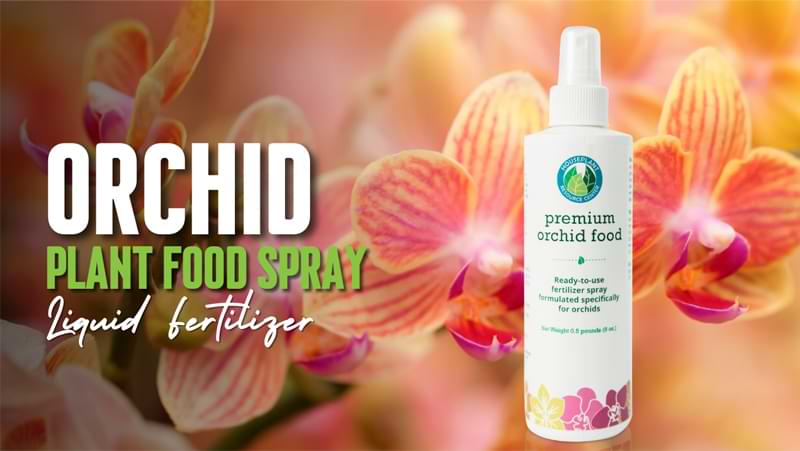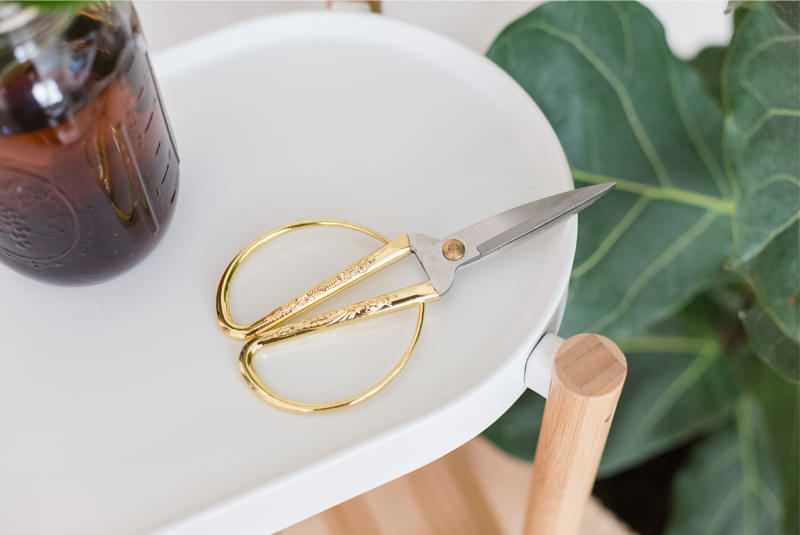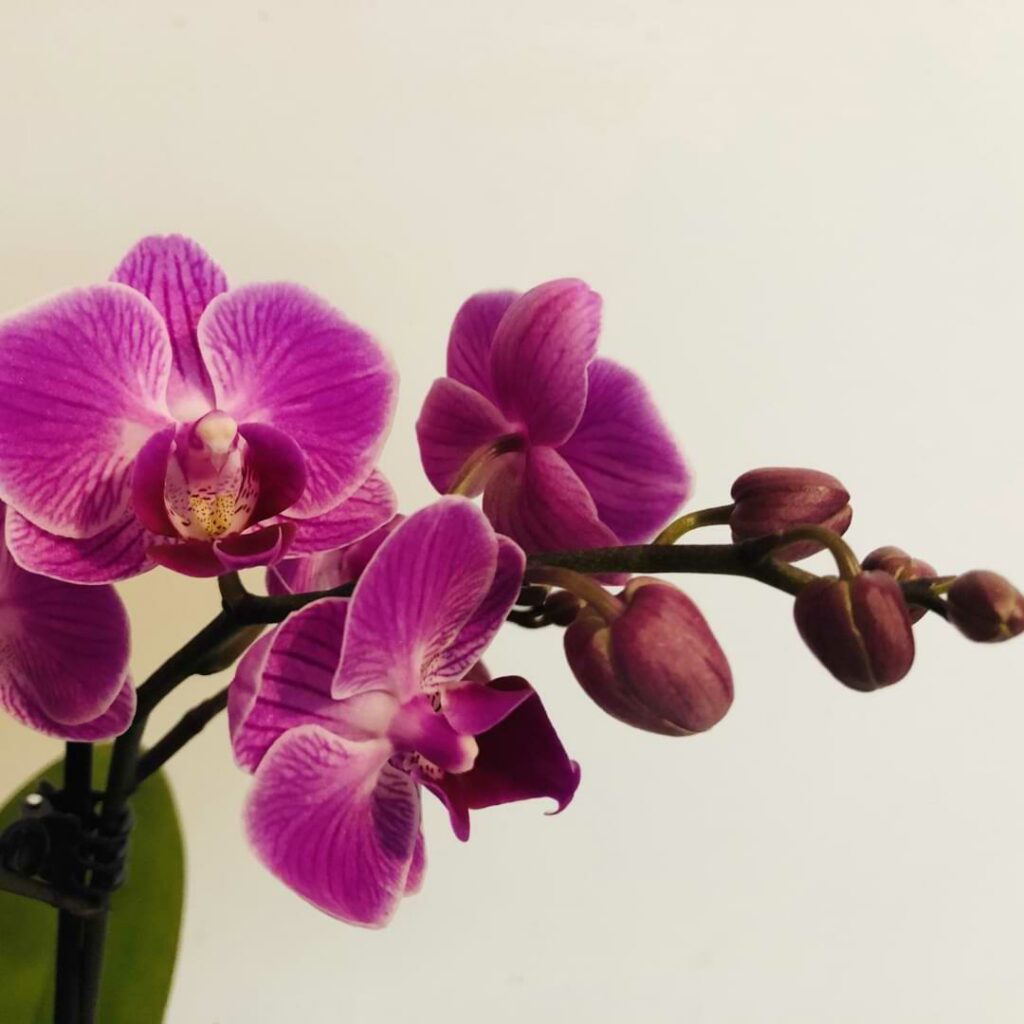For anyone who’s ever been enchanted by the beauty of an orchid, you’re not alone. These flowers have been treasured for centuries and are known for their unique blooms. But did you know that there’s a lot more to orchids than meets the eye? In fact, these flowers have a pretty interesting life cycle that’s worth learning about. From seed to flower, there are six stages in the life cycle of an orchid.
What Is The Life Cycle of An Orchid
The life cycle of an orchid can be divided into six distinct stages: seed germination, root growth, leaf production, flower spike growth, blooming, and dormancy. Here is a closer look at each of these stages, and what your orchid may need during each of them.
1) Seed Germination / Keiki Development
The first stage in the life cycle of an orchid is seed germination. This is when the orchid seedling starts to grow and develop. The process of seed germination can take anywhere from a few weeks to a few months, depending on the type of orchid and the environmental conditions.
This stage is known as keiki development. Keiki is the Hawaiian word for “baby,” which is fitting because during this stage, the orchid looks like a miniature version of its adult self. The keiki will continue to grow and develop until it reaches maturity and blooms for the first time.
During this stage, your orchid needs general care, regular watering, and good vibes.
2) Root Growth
Root growth happens mostly under the soil, but orchids are epiphytic plants, meaning they grow on other plants or objects. They have aerial roots that attach themselves to their host plant or object. These aerial roots are important in providing the plant with nutrients and support.
During the root growth stage, the orchid will produce new growths from its root system. These new growths, called pseudobulbs, will typically grow to be about 6-8 inches tall. The pseudobulbs will then produce leaves that are about 12 inches long. The leaves of the orchid are thin and leathery, and they help to collect water and nutrients for the plant.
In this stage, your plant would benefit from regular fertilizing to ensure the roots get the nutrients they need to grow strong and support the plant that is soon to grow.
3) Leaf Production
It takes an orchid plant about a year to produce a new leaf. The time it takes for the leaf to mature varies depending on the species of orchid, but is generally between four and eight months.
Orchids produce leaves from a meristem, which is a region of actively dividing cells. The cells in the meristem divide and grow rapidly, causing the orchid plant to elongate. As the plant grows taller, the leaves begin to emerge from the tips of the stems.
Once an orchid leaf has fully matured, it will remain attached to the stem for the rest of the plant’s life cycle. Orchid leaves are typically dark green in color and have a leathery texture. They are also quite narrow, which helps them minimize water loss in hot and dry conditions.
During this stage, maintain a regular watering and fertilizing schedule to optimize leaf growth.
4) Growing Flower Spikes
After the stem and very first set of leaves grow, a flower spike will start to grow. This process can take about three months, but like most plants, timing depends on the type of orchid you have.
A flower spike looks like a stem growing with nodes and is a sure sign that flowering is on the way. Many people use the terms “stem” and “flower spike” interchangeably, since it is technically a stem that holds a flower. Once the flower spike has grown to its full length, it’s time for flowering.
How long does it take for an orchid to grow a new stem?
If a flower spike has broken off, or you’ve accidentally cut it off thinking it was an aerial root, your plant can still bloom again, so don’t worry! It can take an orchid a few months to grow a new stem after one has been cut off or broken off. Just make sure to cut it down to the bottom of the stem to signal to the plant to grow a new one.
5) Blooming
Once you’ve noticed the flower spike growing, your orchid should bloom in about 2-3 months. During the blooming stage, the plant produces flowers that are typically large and showy. The blooming stage can last for several weeks or months, depending on the species of orchid. After the flowers fade, the plant enters a period of dormancy.
How many times does an orchid bloom
Orchids typically bloom once a year, although some species may bloom more than once. The blooming process can take anywhere from a few weeks to several months. You may get lucky and have an orchid that will bloom twice in one year!
What do you do with an orchid after the blooms fall off?
Once the blooms fall off, it is important to properly care for the plant to ensure that it continues to thrive.
After the flowers fall off, cut back the stem a few inches above where the blooms were. This will encourage new growth. Be sure to remove any dead or dying leaves as well. It is also important to continue watering and fertilizing the plant on a regular basis.
Keep up on your plants basic needs, and don’t forget to tackle any pest problems head-on, because they could be detrimental to your orchid. Additionally, if you live in an area with cooler winters, you may need to provide extra warmth for your orchid during this time. With proper care, you’ll be able to enjoy more blooms year after year.
How long does it take for an orchid to rebloom?
It can take anywhere from a few months to a couple of years for an orchid to rebloom. The process begins when the plant starts to produce new growth. Once the new growth matures, the plant will start to produce blooms. The length of time it takes for an orchid to rebloom depends on the type of plant and the conditions it is growing in.

Will an orchid Rebloom on the Same stem?
If an orchid reblooms on the same stem, it will do so within six to eight weeks after the initial bloom. The best way to encourage reblooming is to keep the plant healthy and well-watered, but ultimately, it’s up to the individual plant to say whether it will rebloom on the same stem or not. You can always hold off on trimming down the stem after the bloom falls off if you want to give your plant a chance to give a second bloom.
6) Dormancy
After your orchid has put all of its energy into blooming, the plant’s growth slows down and it may even stop completely. This is the dormancy period, and many orchid owners mistake this period as the death of their plant. The leaves may yellow and fall off, and the stem may become thinner.
This is a normal part of the orchid’s life cycle, and it doesn’t mean that the plant is dying. In fact, dormancy is important for the plant because it allows it to rest and rejuvenate itself. After a period of dormancy, the orchid will start to grow again and bloom.
During the dormancy period, just be patient and allow your plant to rest. Continue to water it, but give it more time in between watering to ensure you’re not giving it too much. You’ll also want to cut back on fertilizing your plant to prevent fertilizer burn, as your plant is not going to be using as many nutrients during this time.

What Is The Life Span of an Orchid
The average lifespan of an orchid that is kept indoors is around three to five years. However, with the proper care, some species of orchids can live much longer. For example, the Phalaenopsis orchid has a lifespan of around ten years. Of course, in its natural habitat, orchids can live up to 20 years, sometimes more!
The amazing thing about orchids is how easy they are to propagate and make new orchids from. This plant produces its own propagation super-seeds called pseudobulbs, and they form at the base of the original plant. A pseudobulb is a thickened, fleshy growth that forms at the base of the plant. This pseudobulb stores water and nutrients, which help the main plant to survive during periods of drought.
Once the pseudobulb has formed, the plant will start to produce new leaves. These leaves are much narrower than the older leaves, and they are often lighter in color. The new leaves help to photosynthesize and produce food for the plant.
After the new leaves have fully developed, the plant will begin to produce flowers. The flowers are typically white or pale pink, and they have a sweet scent that attracts pollinators like bees and butterflies when grown outside. Once the flowers are pollinated, they will develop into seed pods.
The seed pods will eventually burst open, releasing thousands of tiny seeds into the air. These seeds will eventually settle on the ground and germinate, producing new orchids that will start the cycle all over again, but don’t worry! This won’t happen when the plant is kept inside. Remember, the flowers must be pollinated for them to produce seeds.
How long do potted orchids live
While orchids can live for many years in the wild, most potted orchids have a shorter lifespan. Depending on the species and cultivar, as well as growing conditions, potted orchids can live anywhere from a few months up to ten years. The type of orchid you have as well as how it is cared for will affect the lifespan of your plant.
With proper care, many potted orchids can bloom repeatedly for years. In general, small-flowered orchid species have a shorter lifespan than large-flowered species. More fragile hybrid cultivars also tend to have shorter lifespans than hardier ones.
Some of the factors that affect an orchid’s lifespan include:
- The type of potting mix used
- Frequent repotting
- Proper watering and fertilizer regime
- Pest and disease control
- Temperature of the orchid’s environment
By giving your orchid a high-quality orchid potting soil, using a proper orchid food every time you water it, ensuring it is on a good watering schedule, and proper pest control, you’ll help your orchid live as long as possible, and produce as many beautiful blooms as it can.
Another factor of an orchid’s overall health is the temperature of the room where it is kept. While orchids are pretty hardy when it comes to temperature, they can still get temperamental when the temperature isn’t ideal. They like temperatures between 50 and 80 degrees, but they can tolerate cooler or hotter temperatures for short periods of time.
The Life Cycle of An Orchid Final Thoughts
An orchid blooms for about 6-8 weeks, after which the flowers will start to fade, and you may not see another bloom until the next year. This may seem like a lot of work to keep an orchid alive for such a short bloom time, but many orchid plant owners say it is more than worth it.
Orchid blooms are some of the most beautiful flowers there are, and the fragrance they give off has been described as heavenly. See where your orchid is in its life cycle and enjoy your beautiful plant for as many years as it will give you! Don’t forget to propagate it so you can continue to enjoy those beautiful blooms even after your original plant decides to stop blooming.
Join Our Orchid Care Facebook Community
In our Facebook group of orchid lovers, we’re dedicated to creating a rich and engaging environment where plant lovers can come together and share tips, tricks, and experiences.
If you’re an orchid lover, come join our Facebook community! We can’t wait to celebrate your successes and help you troubleshoot your care routine.
For continued success, you can explore our other articles or visit our online shop for plant care products that are sure to keep your plants boasting rich green leaves and big, bountiful blooms year-round.



